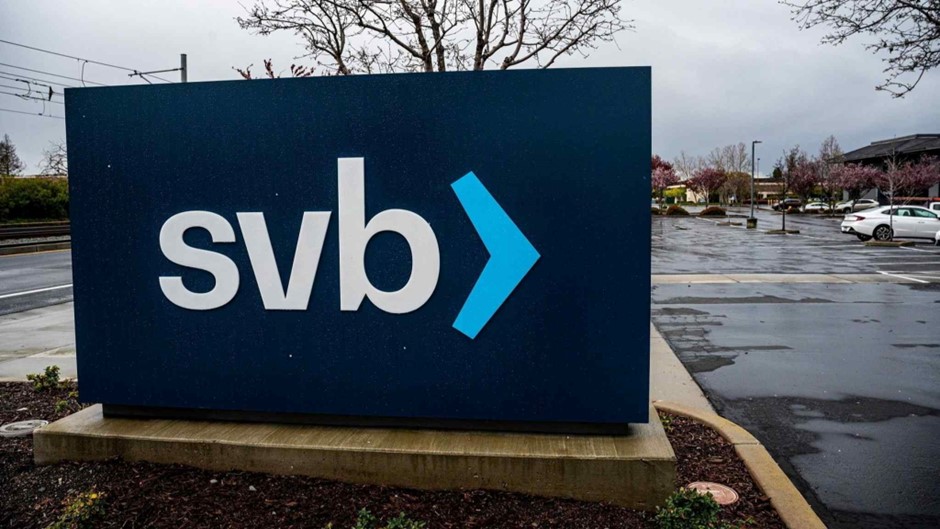On Friday, Californian bank Silicon Valley Bank (SVB) became the largest bank to fail since the 2008 financial crisis. In a sudden collapse that shocked financial markets, it left billions of dollars belonging to companies and investors stranded.
SVB took deposits from and made loans to companies in the heartland of America’s tech sector. The US Federal Deposit Insurance Corporation (FDIC) is now acting as a receiver. The FDIC is an independent government agency that insures bank deposits and oversees financial institutions, which means it will liquidate the bank’s assets to pay back its customers, including depositors and creditors.
What happened to SVB and is this a one-off or a signal that there are more financial crashes to come? The immediate development was the announcement by SVB that it had sold at a loss a bunch of securities it had invested in and that it would have to sell $2.25 billion in new shares to try and shore up its balance sheet. That triggered a panic among key tech firms in California which held their cash at SVB. There was a classic run on the bank. With lightning speed, the bank had to stop depositors withdrawing cash. The company’s stock price collapsed, dragging other banks down with it. Trading in SVB shares was halted and then SVB abandoned efforts to raise capital or find a buyer, leading to the FDIC taking over control.
While relatively unknown outside of Silicon Valley, SVB was among the top 20 American commercial banks (the 16th largest), with $209 billion in total assets at the end of last year, according to the FDIC. It’s the largest lender to fail since Washington Mutual collapsed in 2008 during the global financial crash. So, contrary to some reports, SVB is no minnow. It offered services to nearly half of all venture-backed tech and health care companies in the US. SVB held money for these ‘venture capitalists’ (those that invest in new ‘start-up’ companies).
But it also made investments with the cash deposits it got, extending sometimes risky loans to tech founders personally as well as to their companies. But its investments started to make losses. SVB had bet on buying seemingly safe US government bonds. However, as the Federal Reserve began its cycle of hiking interest rates to “control inflation”, the value of these government bonds fell sharply and SVB’s balance sheet began to take water. When it informed the financial world that it was selling these bonds at a loss to meet customer withdrawals of cash, the run on the bank flooded through. On failing to get extra funding by selling shares, SVB had to declare bankruptcy and go into FDIC receivership.
Some are brushing off the idea that SVB’s collapse is a sign of things to come. “SVB was small, with a very concentrated deposit base”, said Amundi’s head of European equity research, Ciaran Callaghan. It was “not prepared for deposit outflows, didn’t have the liquidity at hand to cover deposit redemptions, and consequently was a forced seller of bonds that drove an equity raising and created the contagion. This is very much an isolated, idiosyncratic case.”
So it’s a one-off. But is it? SVB’s collapse is due to a wider event, namely the Federal Reserve’s aggressive interest-rate hikes over the past year. When interest rates were near zero, banks like SVB loaded up on long-dated, seemingly low-risk treasuries. But as the Fed raised interest rates to ‘fight inflation’, the value of those assets fell, leaving many banks sitting on unrealized losses.
Higher rates have also hit the tech sector especially hard, undercutting the value of tech stocks and making it tough to raise funds. So tech firms started to withdraw their cash deposits at SVB to meet their bills. Ed Moya, senior market analyst at Oanda commented: “Everyone on Wall Street knew that the Fed’s rate-hiking campaign would eventually break something, and right now that is taking down small banks.” The other crack in the banking wall is in cryptocurrencies. Crypto bank lender Silvergate has also been forced to liquidate after the collapse in bitcoin and other cryptocurrency prices and exchanges.
“SVB’s institutional challenges reflect a larger and more widespread systemic issue: the banking industry is sitting on a ton of low-yielding assets that, thanks to the last year of rate increases, are now far underwater — and sinking,” said Konrad Alt, co-founder of Klaros Group. Alt estimated that rate increases have “effectively wiped out approximately 28% of all the capital in the banking industry as of the end of 2022.”
SVB’s failure may be a one-off, but financial crashes always start with the weakest or the most reckless. This is a bank that was being squeezed by the scissors of an impending slump: falling profits in the tech sector and falling asset prices caused by rising interest rates. SVB had grown to about $209bn in assets with a client base concentrated among tech start-ups and so it proved particularly vulnerable to the impact of rapidly rising interest rates. But SVB’s losses on bond sales are being repeated for many other banks. The FDIC recently reported that US banks are sitting on $620bn of combined unrealised losses in their securities portfolios.

Meanwhile, after the latest jobs figures continued to show a ‘tight’ labour market, the Federal Reserve seems set to continue to hike interest rates even faster and higher than financial investors expected. Giving testimony to the US Congress last week, Federal Reserve chair Jay Powell made that clear: “Employment, consumer spending, manufacturing production and inflation have partly reversed the softening trends that we had seen in the data just a month ago.” And as Larry Summers, the Keynesian guru and former Treasury Secretary, put it, “We’ve got to be prepared to keep doing what’s necessary to contain inflation.” Possibly to the point of bringing down parts of the banking and corporate sector.
No comments:
Post a Comment